Neuroendocrine Cells and their effect on Endocrine Neural Interactions
In my STEAM project, I focused on explaining “how the endocrine system and nervous interact with each other”. I did this by exploring neuroendocrine tumors. Neuroendocrine tumors or NETS is a classification of rare tumors called neuroendocrine neoplasms—the heterogeneous tumor affects neuroendocrine cells meaning endocrine cells connected to the nervous system (Oronsky, Ma, Morgensztern, & Carter, 2017). The most common site for these tumors is the gastrointestinal tract but they also develop in the central nervous system, respiratory tract, larynx, thyroid, skin, breast, and urogenital system (Oronsky, Ma, Morgensztern, & Carter, 2017. In the last four decades cases of these tumors have increased six times in the US (Das, & Dasari, 2021).
Neuroendocrine cells are similar to nerve cells and hormone-producing cells in traits (Neuroendocrine tumors, 2023). The neuroendocrine system is responsible for transporting information, regulating metabolic functions, and controlling the interaction between the body’s organs (NeuroEndocrine Cancer Australia, 2022). Neuroendocrine cells make hormones like endocrine cells, receive signals like nerve cells, and release hormones (NeuroEndocrine Cancer Australia, 2022).
Neuroendocrine tumors generally cause little pain, are persistent, slow-growing, and can produce peptide hormones or biogenic amines (Klöppel, 2017). This said some forms of NETs can be aggressive and invade and metastasize to other parts of the body (Neuroendocrine tumors, 2023). The tumors influence the production of hormones including overproducing and underproducing both causing symptoms (Neuroendocrine tumors, 2023). Peptide hormone and biogenic amine release might be the cause of some hormonal syndromes associated with NETs (Klöppel, 2017). Symptoms of having a Neuroendocrine tumor might include pain from tumor growth, a lump under the skin, tiredness, and loss of weight. Symptoms caused by the excess production of hormones might include skin flushing, diarrhea, frequent urination, increased thirst, dizziness, shakiness, and rashes (Neuroendocrine tumors, 2023).
Neuroendocrine tumors are carcinoids meaning they behave malignantly with metastasis, local invasion, and recurrence after resection (Oronsky, B., Ma, P. C., Morgensztern, D., & Carter, C. A., 2017). The cause of the tumor is unknown although it might have to do with hereditary tumor syndromes including multiple endocrine neoplasia, and von Hippel-Lindau syndrome (Klöppel, 2017). Neuroendocrine tumors are detected by the fact that neuroendocrine cells produce secretory granules with the immunoexpression of neuroendocrine markers including chromogranin A and synaptophysin when (Oronsky, Ma, Morgensztern, & Carter, 2017). Neuroendocrine tumors are shaped with nesting trabecular or pyriform growth patterns (Oronsky, Ma, Morgensztern, & Carter, 2017). The actual tumor cells are small and uniform oval nuclei, inconspicuous nucleoli, and fine granular chromatin pattern.
Process
I demonstrated this cancer through a model of a cell wall and vein. I created a normal neuroendocrine cell and a cell affected by a Neuroendocrine tumor. Each of these is connected to nerve cells to show the connection between the nervous system and the endocrine system. The cells themselves are clay models. I constructed the cell wall, vein, and base using Styrofoam and paper mâché. One side of the diagram represents a cell wall the other side is a vein displaying different areas neuroendocrine cells can be. They are in this location to release hormones either into the bloodstream or into the organ. After each piece was constructed, I painted them individually.
References
Das, S., & Dasari, A. (2021). Epidemiology, Incidence, and Prevalence of Neuroendocrine Neoplasms: Are There Global Differences?. Current oncology reports, 23(4), 43. https://doi.org/10.1007/s11912-021-01029-7
Klöppel, Günter. (2017). “Neuroendocrine Neoplasms: Dichotomy, Origin and Classifications.” Visceral medicine vol. 33,5: 324-330. doi:10.1159/000481390
Mayo Foundation for Medical Education and Research. (2023, June 23). Neuroendocrine tumors. Mayo Clinic. https://www.mayoclinic.org/diseases-conditions/neuroendocrine-tumors/symptoms-causes/syc-20354132
NeuroEndocrine Cancer Australia. (2021, November 4). What is the neuroendocrine system and how do neuroendocrine tumors develop?. YouTube. https://www.youtube.com/watch?v=16HA9R-18dA
Oronsky, B., Ma, P. C., Morgensztern, D., & Carter, C. A. (2017). Nothing But NET: A Review of Neuroendocrine Tumors and Carcinomas. Neoplasia (New York, N.Y.), 19(12), 991–1002. https://doi.org/10.1016/j.neo.2017.09.002
Images:
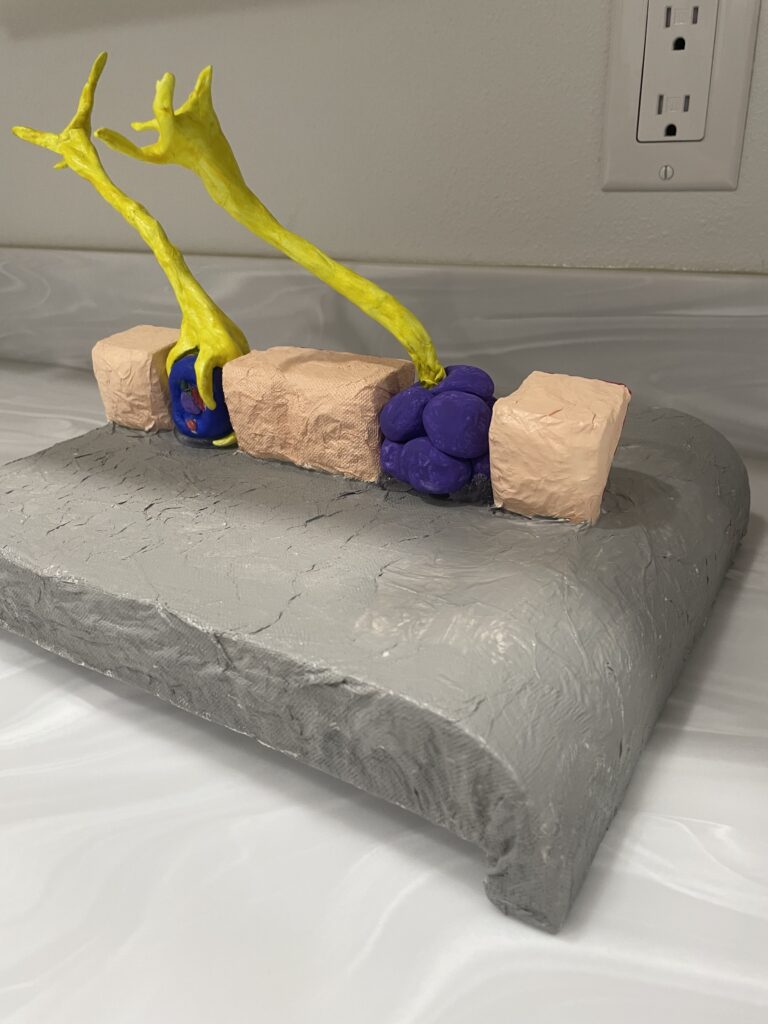
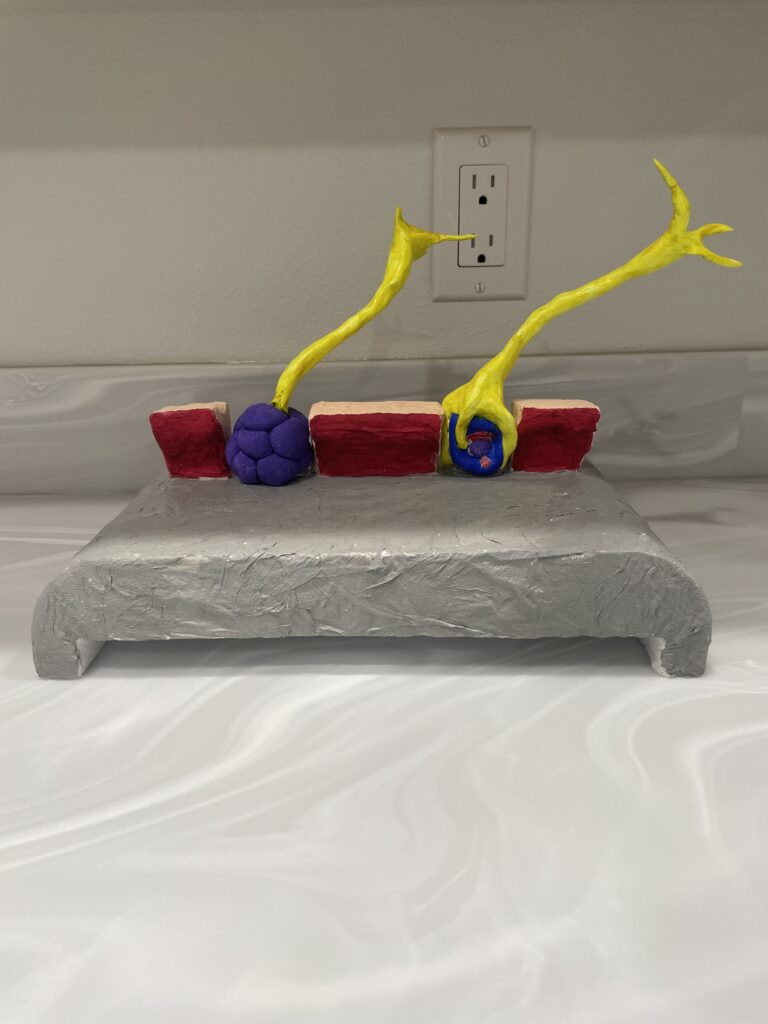
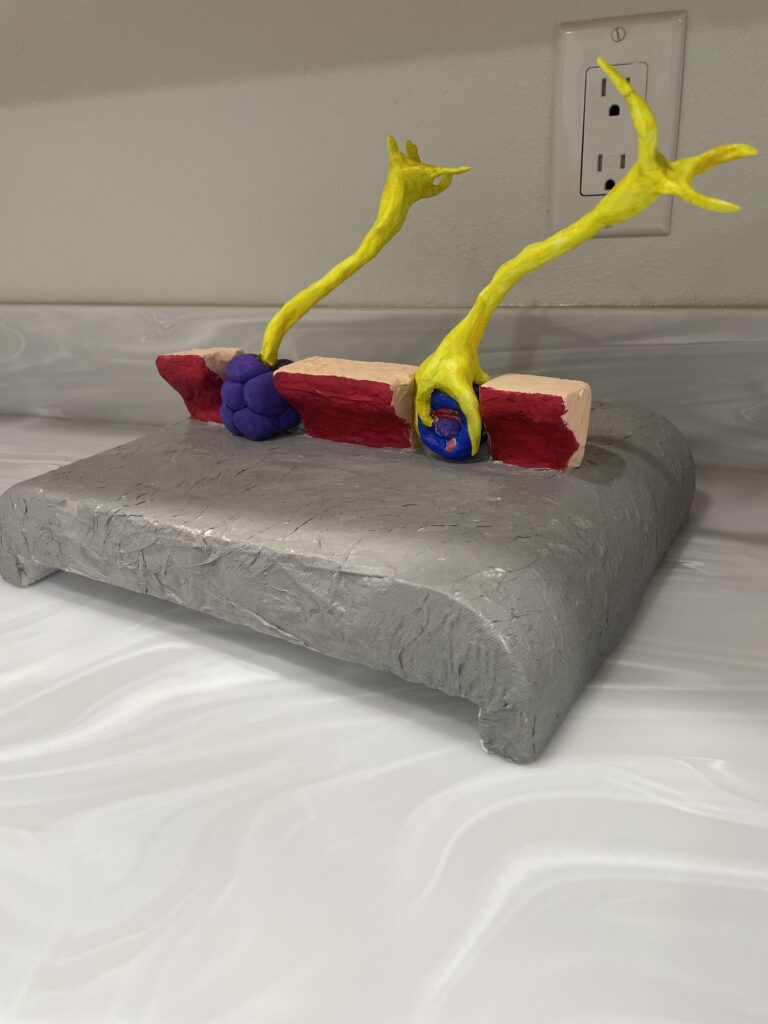
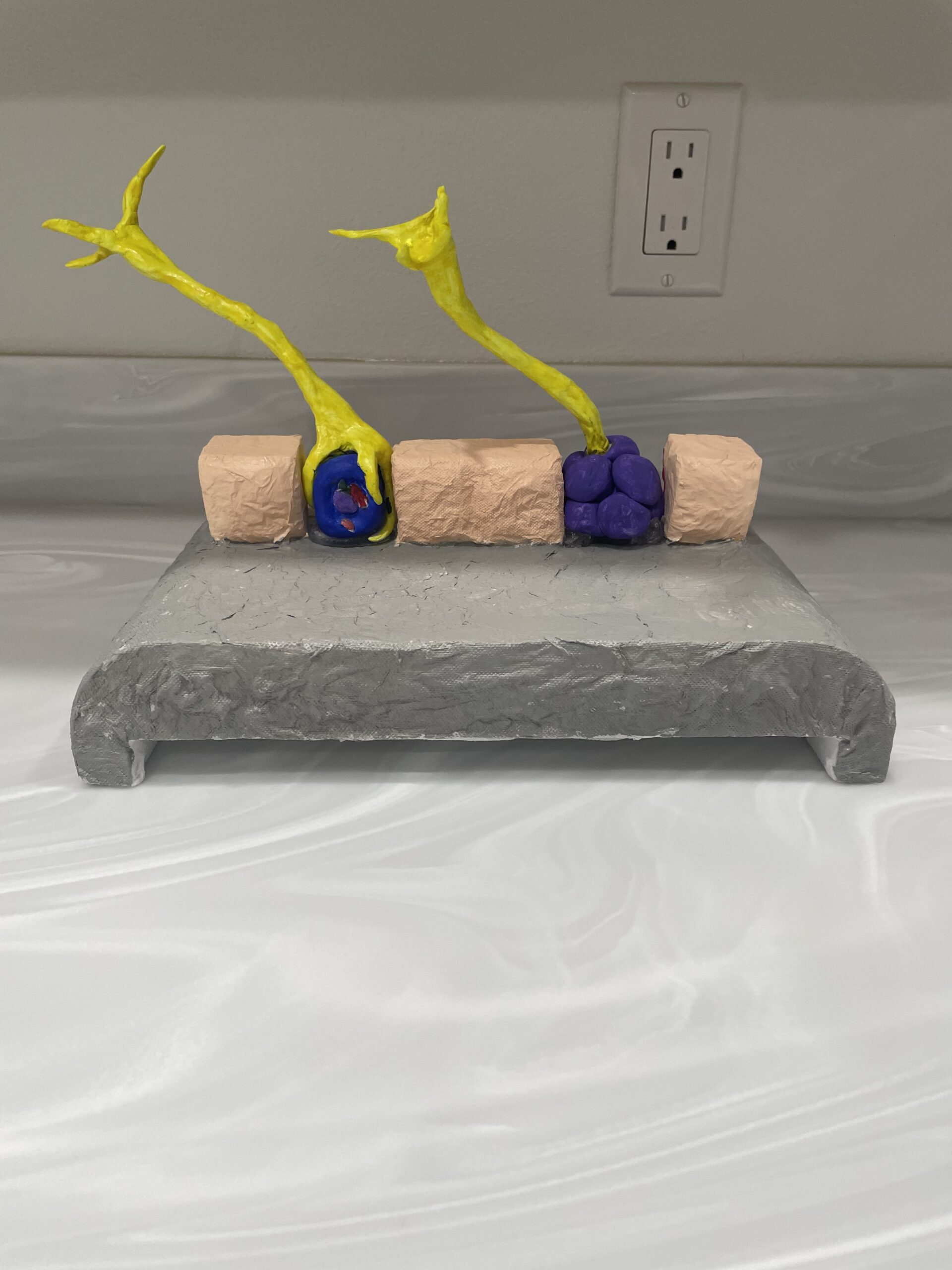
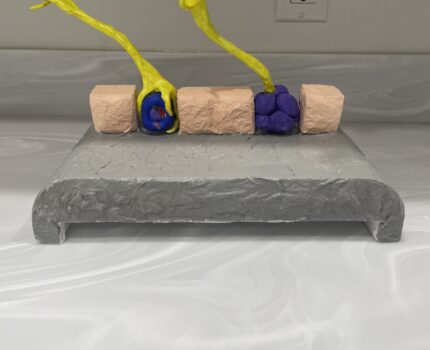
Asher created a model representing a normal neuroendocrine cell vs, a neuroendocrine cell that has been affected by a tumor. His goal for this project was to demonstrate the relationship between the endocrine system and the nervous system and how they interact. He states that neuroendocrine cells are similar to nerve cells and hormone producing cells, they are responsible for transporting information, regulating metabolic functions, and controlling the interaction between the body’s organs. The tumors don’t cause much pain and are slow growing. The cause for these tumors is unknown, however we suspect it might have something to do with heredity. Neuroendocrine tumors are detected by the fact that neuroendocrine cells produce secretory granules with the immunoexpressing of neuroendocrine markers including chromogranin A and synaptophysin. Some symptoms to look for could be pain from tumor growth, a lump under the skin, tiredness, and loss of weight.